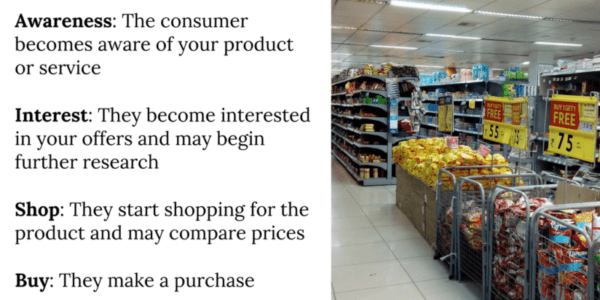Search engine optimization (SEO) plays an integral part in positioning a business for success. Yet few organizations understand the impact that SEO has in marketing today!
Do you understand how significant SEO is to your company’s growth?
More than 90 percent of consumers prefer search engines when it comes to discovering and accessing information online, including product or service info. And worldwide, there are over 6 billion searches performed daily. Not to mention that 92 percent of U.S adults and 90.9 percent of Canadians use the Internet.
For many organizations, the age-old question has always been ‘how to improve sales?’ And SEO can do this for you but there are several things that you probably need to take care of first.
For instance, are you being strategic with your keywords and web pages? Is the user experience a top priority for you? Are you focused on the consumer? These are good questions to ask yourself because inbound is about attracting customers to you, not chasing after them.
With that in mind, here’re some sustainable search engine marketing (SEM) Ideas that can strengthen gross sales and help you create a great SEO strategy.
1. Make It An Integral Part of Your Digital Marketing Strategy
SEO should be the foundation of your digital strategy because it’s the fuel for growth. There’s no marketing without content. Plus you’ll need lots of it if you want to compete and spread your brand messages.
Keyword research is how you find out what people are searching for online. Using the information discovered, you can then create content around it. And later repurpose most of your publications for offline marketing campaigns like snail mail (ordinary postal system as opposed to email).
Can you see how SEO is at the core of everything your company does online yet?
SEO guides your social and content strategy when executed with purpose. For instance, you can use your keyword findings to write more enticing emails. Here’s what I mean…
Assuming that an orthopedic surgeon finds out that a lot of people regularly search for “wearing orthotics side effects”, he or she could make their next newsletter about this.
The basic idea is that if enough people are looking for certain industry-related information online, it’s safe to presume that it’ll be interesting to your audience too. Although this tactic isn’t always applicable to some niches, it works for most!
2. Target Commercial Intent Keywords
These are keywords that are most likely to convert such as “where to hire an SEO” or a local term like “shoelace Toronto”. Obviously, you’ll want to rank your website for a variety of phrases but always consider the intent behind every single keyword. So that you can create content that’s appropriate.
So using the above-mentioned keywords as examples, you’ll want to create dedicated sales pages for those terms. You wouldn’t want to publish a blog post around those keyphrases because the user isn’t looking for more info; they’re ready to buy!
Here’re some keyword modifiers to consider targeting in your SEO campaign if you want to improve sales.
- Buy + your keyword
- Cheap + ” “
- Best + ” “
- Keyphrase + online
- Keyword + location
- Your keyword + discount
- Brand name + products
Dedicated web pages are great for encouraging favorable or beneficial actions. However, you need to balance keyword use and natural language too. Don’t just stuff an endless amount of keywords – this is how you end up on page 100!
Check keyword usage on image tags, metadata, URLs, headings, subheadings, and body copy. Make sure that you’re not overdoing it. Remember that search engines like Google, Bing, and Yahoo can understand synonyms, so you really don’t have to repeat the exact keyword more than one to three times (once is recommended for a 500-word publication).
3. Go For The “Long Tail”
Long tail keywords are key phrases with three or more words in them. People who’re seeking information on products, services or other typically use this type of term. Primarily, you can use long tail keywords to meet prospects at the interest phase of the buyer journey. That cycle looks like this:

This cycle can happen in less than minutes or more (hours, days etc.), depending on the given product. You should try to meet prospects at every stage of the journey. Ensure that content is created for each phase because you don’t want to end up doing work for your competitors.
For instance, if you read about the benefits of SEO here, it would be foolish if I didn’t also let you know that we offered SEO services too.
Determine how you plan to meet prospects at each stage of the buyer journey and what kind of content will resonate with them the most!
4. One Main Keyword Per Page
Can you target more than one keyword per page? Yes, you can but that doesn’t mean it’s a good idea. You don’t want to cause confusion for search engine bots by targeting multiple keywords with one page.
This is going to cause your web pages to bounce all over the SERPs (search engine result pages). Or if you’re not careful, you can end up with a lot of web pages competing for the same keywords within your site, which can lead to lower positions and conversions.
Embracing The Inbound Mindset
For best results with SEO, you need to embrace the inbound mindset. Inbound marketing is user-focused and data-driven. It’s about making sure that prospects are kept happy, while simultaneously meeting business targets.
For every content you create, find “the sweet spot” – This means aligning the user’s intentions with business objectives. Essentially, assuring the prospect that your web page will solve their problem and introduce them to what you do (e.g. services/products offered).
Ideally, you want to show off what you do above-the-fold (positioned in the upper or lower half of a web page). Navigation and other strategic placements can help you do this without having to compromise the quality of your content.
Now it’s your turn, what’s your biggest challenge with SEO? Let me know in the comments.
'The goal of SEO is to improve revenues and you don't have to rank #1 on everything to do that.'Click To Tweet
I’m a freelance copywriter and SEO specialist. I aim to empower individuals and businesses with impactful marketing solutions and insights. In my downtime, I recharge by embracing the beauty of nature or cherishing moments with my loved ones. If you found value in this post, please consider sharing it.
Want a heads-up whenever a new article drops? Subscribe here





